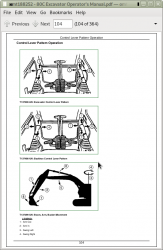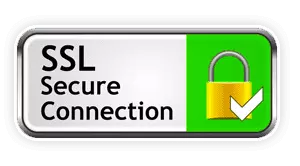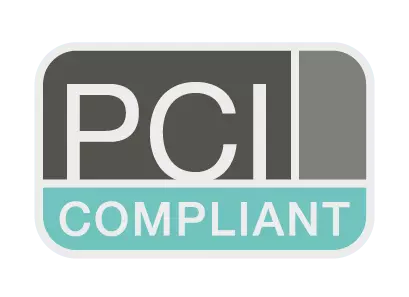John Deere 80C Excavator Operator's Manual (OMT188252)
Catalog:
Model:
Price: US$ 25.00
John Deere 80C Excavator Operator's Manual (OMT188252)
omt188252 - 80C Excavator Operator's Manual.pdf
Complete Operator's manual for John Deere 80C Compact Excavator, with all the shop information to maintain, operate your 80C Excavator.
PRODUCT DETAILS:
Total Pages: 364 pages
File Format: PDF (Internal Links, Bookmarked, Table of Contents, Searchable, Printable, high quality)
Language: English
omt188252 - 80C Excavator
Table of Contents
Foreword
EPA Non-road Emissions Control Warranty Statement—Compression Ignition
CARB Non-road Emissions Control Warranty Statement—Compression Ignition
Technical Information Feedback Form
Section 1-1: Safety—Safety and Operator Conveniences
Safety and Operator Convenience Features
Section 1-2: Safety—General Precautions
Recognize Safety Information
Follow Safety Instructions
Operate Only If Qualified
Wear Protective Equipment
Avoid Unauthorized Machine Modifications
Add Cab Guarding for Special Uses
Inspect Machine
Stay Clear of Moving Parts
Avoid High-Pressure Fluids
Avoid High-Pressure Oils
Beware of Exhaust Fumes
Prevent Fires
Prevent Battery Explosions
Handle Chemical Products Safely
Dispose of Waste Properly
Prepare for Emergencies
Section 1-3: Safety—Operating Precautions
Use Steps and Handholds Correctly
Start Only From Operator's Seat
Use and Maintain Seat Belt
Prevent Unintended Machine Movement
Avoid Work Site Hazards
Keep Riders Off Machine
Avoid Backover Accidents
Avoid Machine Tip Over
Use Special Care When Lifting Objects
Add and Operate Attachments Safely
Section 1-4: Safety—Maintenance Precautions
Park and Prepare for Service Safely
Service Cooling System Safely
Remove Paint Before Welding or Heating
Make Welding Repairs Safely
Drive Metal Pins Safely
Section 1-5: Safety—Safety Signs
Safety Signs
Section 2-1: Operation—Operator's Station
Pedals, Levers, and Panels
Monitor Panel
Monitor Panel Functions
Front Switch Panel
Front Switch Panel Functions
Rear Switch Panel
Horn
Pilot Control Shutoff Lever
Travel Alarm and Travel Alarm Cancel Switch
Cab Heater and Air Conditioner
Operating AM/FM Radio
Secondary Exit Tool
Opening Upper Front (Secondary Exit) Window
Removing and Storing Lower Front Window
Opening Side Windows
Opening and Closing Roof Exit Cover
Adjusting Operator Seat
Section 2-2: Operation—Operating the Machine
Before Starting Work
Operator's Daily Machine Check Before Starting
Starting Engine
Cold Weather Starting
Cold Weather Warm-Up
Travel Pedals and Levers
Control Lever Pattern Operation
Control Lever Pattern Conversion—Earlier Units
Control Lever Pattern Conversion—Later Units
Operating Offset Boom—If Equipped
Operating Tips—Offset Boom
Operating Backfill Blade
Operating Tips—Backfill Blade
Operating In Water and Mud
Select Correct Track Shoes
Driving Up a Steep or Slippery Slope
Lifting
Lower Boom With Engine Stopped
Parking Machine
Transporting Machine Equipped With Long Arm
Loading and Unloading for Transport
Towing Machine
Lifting Machine
Section 3-1: Maintenance—Machine
Diesel Engine Oil
Diesel Engine Oil and Filter Service Intervals
Light Duty Diesel Engine Coolant (for diesel engines without wet sleeve cylinder liners)
Drain Intervals for Diesel Engine Coolant
John Deere COOL-GARD™ II Coolant Extender
Supplemental Coolant Additives
Operating in Warm Temperature Climates
Additional Information About Diesel Engine Coolants and John Deere COOL-GARD™ II Coolant Extender
Testing Diesel Engine Coolant
Low Sulfur Diesel Fuel Conditioner
Testing Diesel Fuel
Handling and Storing Diesel Fuel
Alternative and Synthetic Lubricants
Diesel Engine Oil
Hydraulic Oil
Swing Gearbox and Travel Gearbox Oils
Track Adjuster, Working Tool Pivot, Swing Bearing, and Swing Bearing Gear Grease
Lubricant Storage
Mixing of Lubricants
Section 3-2: Maintenance—Periodic Maintenance
Service Machine at Specified Intervals
Check Hour Meter Regularly
Prepare Machine for Maintenance
Open Access Doors
Open Engine Hood
Fuel Tank
Hydraulic Breaker and Crusher Attachments
Maintenance and Repair Record Keeping System
Fluid Analysis Program Test Kits and 3-Way Coolant Test Kit
Periodic Maintenance Record Keeping System
Section 3-3: Maintenance—As Required
Check and Adjust Track Sag
Clean Fuel Tank Inlet Screen
Drain Water and Sediment From Fuel Tank Sump
Drain Water Separator
Bleed Fuel System
Clean Air Cleaner Dust Valve
Inspect Belt, Check and Adjust Tension
Clean Radiator Air Inlet Screen
Section 3-4: Maintenance—Every 10 Hours or Daily
Check Hydraulic Oil Tank Level
Check Recovery Tank Coolant Level
Check Engine Oil Level
Section 3-6: Maintenance—Every 100 Hours
Lubricate Bucket Pivot Pins
Grease Boom Working Pivots
Section 3-7: Maintenance—Every 250 Hours
Lubricate Backfill Blade
Drain Hydraulic Oil Tank Sump (S.N.—011762)
Drain Hydraulic Oil Tank Sump (S.N. 011763—)
Check Travel Gearbox Oil Level
Clean or Replace Primary Air Cleaner Element
Check Battery Electrolyte Level and Terminals
Take Engine Oil Sample
Section 3-8: Maintenance—Every 500 Hours
Grease Swing Bearing Gear
Replace Hydraulic Oil Filter (S.N. —011762)
Replace Hydraulic Oil Filter (S.N. 011763—)
Check Air Intake Hose
Replace Final Fuel Filter
Check Radiator Coolant Level
Grease Swing Bearing
Check Cab Fresh Air Filter
Check Cab Recirculating Air Filter
Change Engine Oil and Replace Filter
Adjust Engine Valve Lash
Take Fluid Samples
Section 3-9: Maintenance—Every 1000 Hours
Adjust Engine Valve Lash
Replace Pilot System Oil Filter
Replace Air Cleaner Elements
Inspect Fan Belt
Check Coolant
Section 3-10: Maintenance—Every 2000 Hours
Change Travel Gearbox Oil
Clean Engine Crankcase Ventilation Tube
Section 3-11: Maintenance—Every 4000 Hours
Replace Swing Device Drain Filter
Change Hydraulic Tank Oil and Clean Suction Screen (S.N. —011762)
Change Hydraulic Tank Oil and Clean Suction Screen (S.N. 011763—)
Drain Cooling System
Heavy Duty Diesel Engine Coolant
Cooling System Fill and Deaeration Procedure
Section 4-1: Miscellaneous—Machine
Do Not Service or Adjust Injection Nozzles or High Pressure Fuel Pump
Do Not Service Control Valves, Cylinders, Pumps, or Motors
Precautions for Alternator and Regulator
Using Booster Batteries—24-Volt System
Handling, Checking, and Servicing Batteries Carefully
Using Battery Charger
Replacing Batteries
Welding On Machine
Clean Machine Regularly
Adding 12-Volt Accessories
Replacing Fuses
Replacing Bucket Teeth
Replacing Bucket Tooth Tip—Heavy-Duty Bucket
Adjusting Bucket to Arm Joint
Removing Bucket
Track Sag General Information
Check Track Shoe Hardware
Hardware Torque Specifications
Unified Inch Bolt and Screw Torque Values
Metric Bolt and Screw Torque Values
Section 4-2: Miscellaneous—Operational Checkout
Operational Checkout
Section 4-3: Miscellaneous—Troubleshooting
Troubleshooting Procedure
Engine
Electrical System
Hydraulic System
Section 4-4: Miscellaneous—Storage
Prepare Machine for Storage
Monthly Storage Procedure
Section 4-5: Miscellaneous—Machine Numbers
Record Product Identification Number (PIN)
Record Engine Serial Number
Record Travel Motor Serial Numbers
Record Swing Motor Serial Number
Keep Proof of Ownership
Keep Machines Secure
Section 4-6: Miscellaneous—Specifications
Engine Specifications
Drain and Refill Capacities
Machine Specifications
Working Ranges
Lift Capacity—KG (LB) (blade down with standard boom and rubber track)
Lift Capacity—KG (LB) (blade down and with standard boom)
Lift Capacity—KG (LB) (blade down with standard boom and rubber track)
Lift Capacity—KG (LB) (blade down and with standard boom)
Lift Capacity—KG (LB) (blade down with offset boom and rubber track)
Lift Capacity—KG (LB) (blade down and with offset boom)







